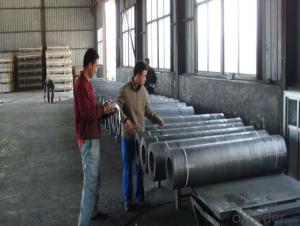When we talk about the heart of any furnace, the graphite electrode surely comes to mind. It’s not just a piece of carbon we’re dealing with here; it’s the lifeblood of the steel industry. Now, let’s dive into the world of graphite electrodes and explore the RP standard, comparing it to other standards out there.
Graphite electrodes are the unsung heroes of the metallurgical world. They’re the silent force that helps turn raw materials into the steel we use in our everyday lives. But what makes the RP standard stand out from the rest? Let’s find out.
First things first, the RP, or the Refined Petroleum Coke, is a type of graphite electrode that’s made from petroleum coke. It’s a high-quality electrode that’s known for its strength, conductivity, and resistance to oxidation. It’s the go-to choice for many industries because of its performance and reliability.
But what sets the RP standard apart from the others? Well, it’s all about the raw materials and the manufacturing process. The RP standard uses high-quality petroleum coke, which is a byproduct of the oil refining process. This gives the electrode a unique composition that’s not found in other types of graphite electrodes.
The manufacturing process is also a key factor. The RP standard involves a series of steps that ensure the electrode is of the highest quality. From the calcination of the petroleum coke to the mixing and pressing, every step is carefully controlled to produce a consistent and high-performing electrode.
Now, let’s compare the RP standard to other standards. There are several types of graphite electrodes, such as the HP, UHP, and UHP-RH grades. Each of these has its own set of properties and applications.
The HP, or High Power, electrodes are a step below the RP in terms of quality and performance. They’re made from a mix of needle coke and petroleum coke, which gives them a lower density and a higher resistance to oxidation. They’re a popular choice for their affordability and versatility.
The UHP, or Ultra High Power, electrodes are a step above the HP in terms of quality. They’re made from needle coke, which gives them a higher density and a lower resistance to oxidation. They’re ideal for use in electric arc furnaces and ladle furnaces due to their high performance and durability.
And then there’s the UHP-RH, or Ultra High Power Rammed, which is the cream of the crop. These electrodes are made from a blend of needle coke and coal tar pitch, which gives them an even higher density and a lower resistance to oxidation. They’re the top choice for high-demand applications where performance and reliability are crucial.
So, what does this all mean for the RP standard? It means that while it may not be the absolute best in terms of quality and performance, it’s a solid choice for many industries. It offers a balance of affordability, performance, and reliability that’s hard to beat.
But it’s not just about the technical aspects. The RP standard also has a personal touch. It’s a product that’s been crafted with care and precision, a testament to the skill and expertise of the people who make it. It’s not just a piece of carbon; it’s a symbol of the hard work and dedication that goes into every piece of steel produced.
In conclusion, the RP standard is a versatile and reliable choice for many industries. It may not be the top of the line, but it offers a balance of quality and affordability that’s hard to find. And let’s not forget the personal touch that comes with every electrode – a reminder of the passion and dedication that goes into every piece of steel we use. So, the next time you see a graphite electrode, remember that it’s not just a piece of carbon – it’s the heart and soul of the steel industry.

